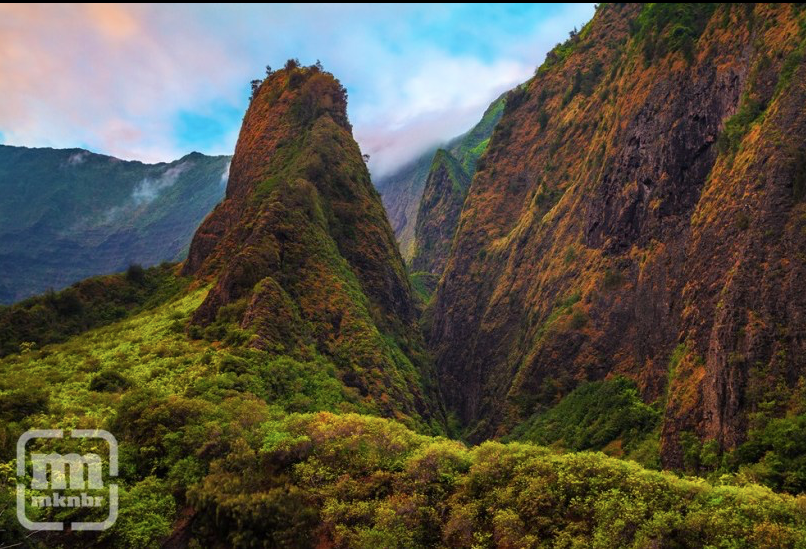Article: lao Valley Stands Without Rival...
- Philip Waikoloa

- 4 de jun. de 2019
- 3 min de leitura

From the highest peak of Pu‘u Kukui to the shoreline of Kahului Bay, the ahupua‘a (land division) of Wailuku was a favorite place of Ali‘i and a ruling center of Maui. ‘Īao Valley is part of the ahupua‘a.
For centuries, high chiefs and navigators from across the archipelago were buried in secret, difficult-to-access sites in the valley’s steep walls.
‘Iao Valley became a “hallowed burying place for ancient chiefs” and is the first place mentioned in the historical legends as a place for the secret burials of high chiefs. (Thrum)
Because this was sacred ground, commoners were not permitted to enter the valley, except for the Makahiki festival.
Some suggest the last burial was in 1736, with the burial of King Kekaulike.
Then, in the late-1780s into 1790, Kamehameha conquered the Island of Hawai‘i and was pursuing conquest of Maui and eventually sought conquer the rest of the archipelago.
At that time, Maui’s King Kahekili and his eldest son and heir-apparent, Kalanikūpule, were carrying on war and conquered O‘ahu.
In 1790, Kamehameha travelled to Maui. Hearing this, Kahekili sent Kalanikūpule back to Maui with a number of chiefs (Kahekili remaining on O‘ahu to maintain order of his newly conquered kingdom.)
After a battle in Hana, Kamehameha landed at Kahului and then marched on to Wailuku, where Kalanikūpule waited for him. The ensuing battle was one of the hardest contested on Hawaiian record. The battle started in Wailuku and then headed up ‘l̄ao Valley – the Maui defenders being continually driven farther up the valley.
Kamehameha’s superiority in the number and use of the newly acquired weapons and canon (called Lopaka) from the ‘Fair American’ (used for the first time in battle, with the assistance from John Young and Isaac Davis) finally won the decisive battle at ‘Īao Valley.
Arguably, the cannon and people who knew how to effectively use it were the pivotal factors in the battle. Had the fighting been in the usual style of hand-to-hand combat, the forces would have likely been equally matched.
The Maui troops were completely annihilated, and it is said that the corpses of the slain were so many as to choke up the waters of the stream of ‘l̄ao – one of the names of the battle was “Kepaniwai” (the damming of the waters.)
Maui Island was conquered and its fighting force was destroyed – Kalanikūpule and some other chiefs escaped over the mountain at the back of the valley and made their way to O‘ahu (to later face Kamehameha, again; the next time at the Battle of Nu‘uanu in 1795.)
After the battle at ‘Iao, Kamehameha received Keōpūolani as his wife. Kamehameha left for Moloka‘i to secure it under his control, before proceeding to O‘ahu.
Then, in 1795, Kamehameha moved on in his conquest of O‘ahu.
Today, ‘Iao Valley State Monument is operated under DLNR’s State Parks system. It is at the end of ‘Iao Valley Road (Highway 32.) Free parking for Hawai‘i residents, $5 per car for others (open 7 am to 7 pm.)
A paved walking trail provides a scenic viewpoint of Kuka’emoku; a short paved loop trail meanders through an ethnobotanical garden adjacent to ‘Iao stream.
“‘lao stands without rival, as the loveliest spot in these tropical isles placed in the midsummer sea, or as Mark Twain has lovingly called it, ‘The loveliest fleet of islands that lie anchored in any Ocean’ …”
“… for seek throughout the four corners of the lands of the Kamehamehas, you will never find a place with such incomparable environment of lofty peaks, giant lehua trees, with blossoms of rosy hues glistening in the glare of the noonday sun, and deep canyons through which the mighty waters run down, as here in lao.” (Field)








































Comentários